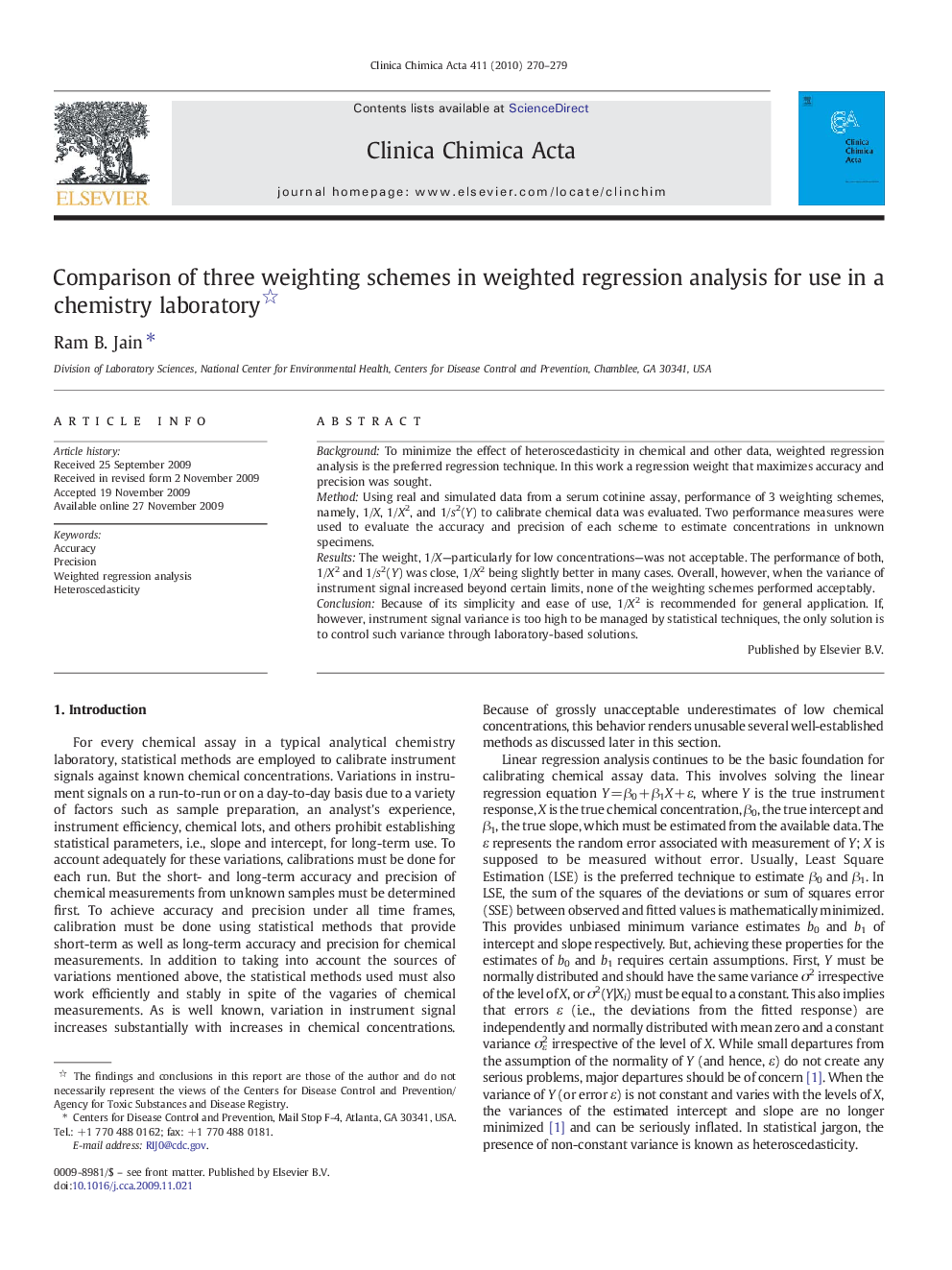| Article ID | Journal | Published Year | Pages | File Type |
|---|---|---|---|---|
| 1967194 | Clinica Chimica Acta | 2010 | 10 Pages |
BackgroundTo minimize the effect of heteroscedasticity in chemical and other data, weighted regression analysis is the preferred regression technique. In this work a regression weight that maximizes accuracy and precision was sought.MethodUsing real and simulated data from a serum cotinine assay, performance of 3 weighting schemes, namely, 1/X, 1/X2, and 1/s2(Y) to calibrate chemical data was evaluated. Two performance measures were used to evaluate the accuracy and precision of each scheme to estimate concentrations in unknown specimens.ResultsThe weight, 1/X—particularly for low concentrations—was not acceptable. The performance of both, 1/X2 and 1/s2(Y) was close, 1/X2 being slightly better in many cases. Overall, however, when the variance of instrument signal increased beyond certain limits, none of the weighting schemes performed acceptably.ConclusionBecause of its simplicity and ease of use, 1/X2 is recommended for general application. If, however, instrument signal variance is too high to be managed by statistical techniques, the only solution is to control such variance through laboratory-based solutions.
